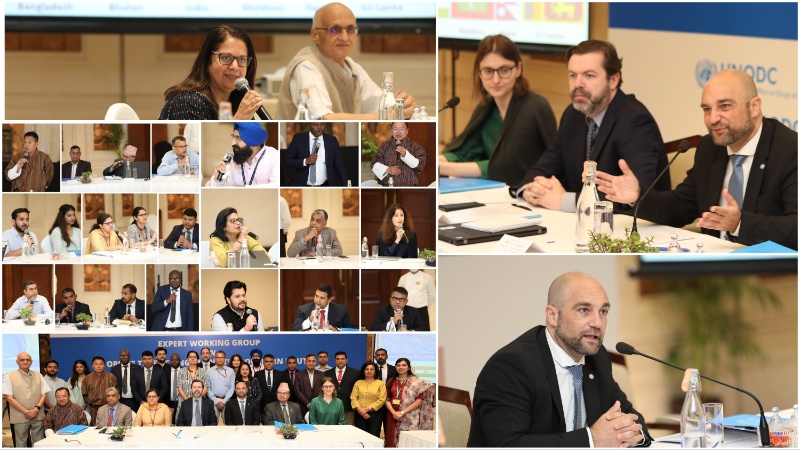South Asia: Understanding and Addressing the Threat of Opiate Trafficking

New Delhi (India)/19 May 2023: South Asia, home to nearly 25 per cent of the world’s population, is also home to over a third of the world’s opiate users, according to the 2022 World Drug Report. Addressing this growing market for opiates and opioids has become a significant challenge for governments, and a flourishing young population in the region further increases the threat of drug use and drug trafficking.
“Drugs can kill,” said Executive Director of the United Nations Office on Drugs and Crime (UNODC) Ghada Waly in the preface to the 2022 World Drug Report. “Using drugs can endanger health and mental health and is especially harmful in early adolescence.” However, “more young people are using drugs compared with previous generations.”
Opiates from Afghanistan are trafficked to nearly every region in the world. Many traffickers make use of what is known as the “Southern Route”, i.e., a collection of trafficking routes and organized criminal groups that move the drugs to Africa, South and South East Asia, and the Middle East.
Though organized crime groups continuously modify trafficking routes and methods, the drugs are mainly trafficked by dhows – a type of sailing boat – from the Makran coast of Iran and Pakistan. Traffickers then transfer the drugs to smaller fishing vessels, which can easily deliver them to a large number of landing points along the coast of India, Maldives and Sri Lanka. Smaller quantities of opiates are also trafficked to South Asia by air couriers and via postal packages.
The impact of drug trafficking along the Southern Route can cause untold harm to communities – drugs can fuel or prolong conflict or corruption, hamper sustainable development, and undermine the rule of law.
To better understand the threat posed by opiate trafficking in South Asia, UNODC held a two-day Expert Working Group Meeting on Opiate Trafficking along the Southern Route in New Delhi, India, on 10-11 May 2023.
The meeting gathered representatives from India, Bhutan, Maldives, Nepal, Sri Lanka, Bangladesh and Mozambique. Participants discussed current trends and challenges related to opiate trafficking in South Asia and along the Southern Route.
Participants held intensive deliberations on a range of issues, including: key trends in Afghan opiate trafficking, country-focused situational analysis, and a review of supply and demand. The need for collective regional efforts to strengthen law enforcement and health responses was emphasized during the discussions.
“Information sharing and cooperation between Member States and the international community is crucial to achieve a better understanding of the threat of drug trafficking and organized crime in the region and globally,” emphasized Marco Teixeira, UNODC Regional Representative for South Asia. “No single country can address the issue of drug trafficking in isolation.”
The event, made possible with the financial support from the United States of America, was organized by the UNODC’s Regional Office for South Asia (ROSA) and the UNODC’s Afghan Opiate Trade Project (AOTP).
Key outcomes from the meeting included requests from Member States for capacity building on analytical and investigative skills, strengthened information sharing mechanisms and the sharing of good practices in terms of drug treatment and prevention. The findings from the event will be incorporated into a research report on opiate trafficking along the southern route, with a booklet focusing on South Asia to be published at the end of 2023.
This activity contributed to SDG 3, SDG 16 and SDG 17: https://sdg-tracker.org/
(Supported by the US Bureau of International Narcotics and Law Enforcement Affairs)